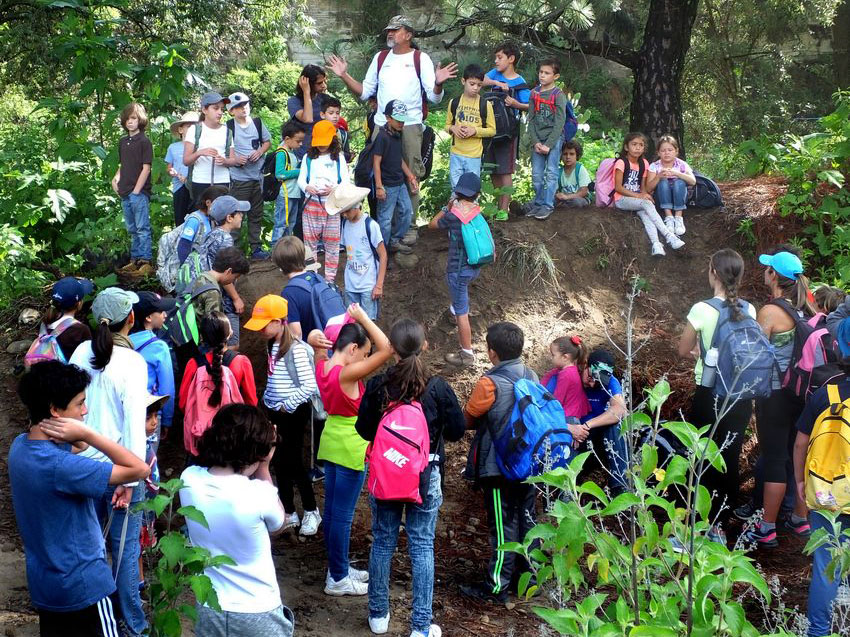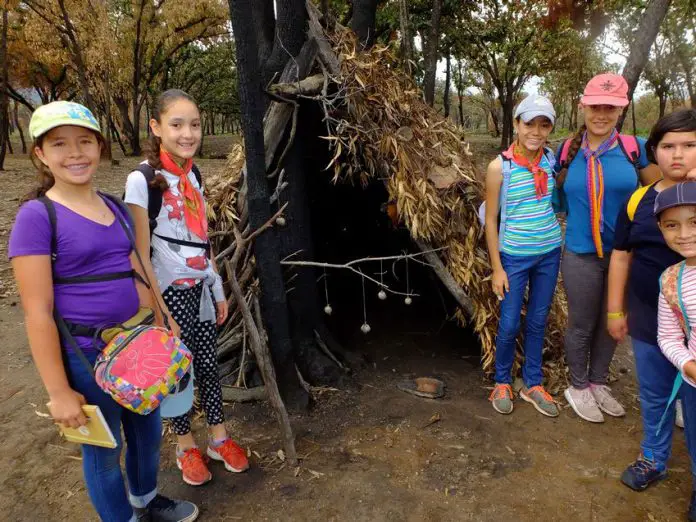Learning does not take place if teachers simply dictate their knowledge to students. But something marvelous happens when teachers put students into direct contact with what they need to learn.
Fortunately for a goodly number of Guadalajara youngsters, that is exactly what natural science teacher Jesús “Chuy” Moreno has been doing during his summer courses for over three decades.
When Moreno isn’t teaching, he’s a professional nature photographer, forever out in the blue photographing animals, flowers and birds. When I asked him how he had managed to shoot a particularly nice picture of a Clark’s Grebe (Aechmophorus-clarkii), he told me he got it using a technique he’s been practicing for years. He gets up at 4:00am, drives off to his favorite lake and wades in, wearing a wet suit.
He then dunks under the water and inserts his head into a hydrohide, a small, camouflaged floating platform on which his camera is mounted. He then moves to what he thinks is a good spot and waits. He waits, first, for the sun to rise; then he waits for the fog to lift and, after that, he waits for the right bird to appear at the right spot in front of his camera, and finally he takes the picture “exactly at bird’s eye level.”
I suggested that some people might actually prefer being waterboarded to standing up to their neck in a cold lake while crouching under a hydrohide for endless hours — and Moreno admitted he doesn’t know of a single photographer, apart from himself, doing this sort of thing in Mexico at the present time. Think about this the next time you see a great picture of a water bird taken at bird’s eye level!

Moreno’s summer courses usually take place in July and last for four weeks.
Curious to see this school in the woods, I caught up with Moreno one summer day at a wide, flat clearing in the sprawling Primavera Forest, located due west of Guadalajara. There were over 70 kids sitting out there on a carpet of pine needles, intently concentrated on — well, on the shadows of sticks, which they had pushed into the ground in a standing position.
“What are you doing?” I asked one of the children.
“Chuy showed us how to make sundials,” she told me, “and now we’re in the middle of a competition to see who can make the most accurate sundial, which involves marking the position of the shadow very exactly . . .”
“. . . and we’re also learning how to use our sundials to find north,” chimed in another girl.
“OK, now tell me something else you learned this week,” I asked.

“Well, we learned the names of a lot of plants and we had a contest to see who could build the most resistant shelter out of branches and brush.”
“Last week, we had some big storms,” I replied. Did your shelter protect you from the rain?”
“Bueno, not much.” confessed one girl, “but I didn’t care because the rain was so lovely.”
Next, I struck up a conversation with Andrea Borrayo, one of several adults who were assisting Moreno in managing this school-in-the-woods. She told me she has been attending these courses since she was 10 years old, “and now I am 35,” she said, making her the ideal person to comment on the results of this program.
“This is my story,” she told me. “As a child, I lived in Mexico City and I spent my time watching TV and doing what all city kids do . . . and I didn’t know one single thing about nature. But I moved here to Guadalajara and went out into the woods with Chuy Moreno and we collected butterflies, we crossed deep canyons and we learned a lot about nature and I underwent a radical change in all my tastes!
“As a result, I went off to study agronomy, of all things. When I first came to these courses as a girl, I had no goal in life, and now I’m a biology teacher. So, comparing studying from a book in a classroom to going out into the woods to experience things first hand, I can say for sure: what you do out in nature stays with you; those remain the important things in your life.”
[soliloquy id="85726"]
Borrayo went on to say that the unprogrammed events which occur in the woods often turn out to be the best moments of all. “Yesterday we came upon a lizard and her eggs. The children drew pictures and there was much talk about how best to care for the eggs, because they were in an exposed place.
“Unplanned experiences like this are often the most meaningful, the richest experiences. Many of the kids actually took an egg home, to care for, to observe what would happen and to keep a record of everything they could learn.”
Every morning, under a spreading oak tree, Chuy Moreno goes over the rules for spending a day with him in the woods. Just listening to this talk gives some idea what sort of experience the kids are getting. “Stay on the trail that I’m using,” he says. “After the big forest fire a few months ago, little sprouts and mushrooms are just beginning to appear, so we don’t want to go stomping on them.
“The most dangerous creature in the woods as far as you are concerned is the scorpion, so the No. 1 rule is never put your hands where you can’t see them, for example into a pile of dry leaves. And if you climb a tree, watch where you put your hands because scorpions also enjoy climbing trees.
“As for snakes, we’ve seen a lot of them over the past few days, but so far no rattlers. If we spot a snake today, call me before you touch it. A lot of you are now good at identifying snakes, but sometimes they don’t look quite the same as the picture in the field guide . . .”
While following Moreno and the kids through the woods, I struck up a conversation with one of the adults in the group. I asked him if he was one of Chuy’s assistants.
“No, I’m here as a parent, with one of my daughters, but 20 years ago I was one of these kids and I can tell you it was — and still is — amazing to walk through the woods with Chuy. He tells us all about everything we see, always with a great sense of humor.
“I’m an architect, but I think I learned more from being in the woods with Chuy than I did in the university. In fact, I would say half the students in my class, when I was younger, ended up becoming biologists, all because of Chuy . . over the years I’ve met a lot of other biologists and researchers in the natural sciences who told me they chose their career precisely because of Chuy’s summer courses. So in my opinion, I think the University of Guadalajara should erect a monument to him!
If you like nature photography, check Chuy Moreno’s website.
The writer has lived near Guadalajara, Jalisco, for more than 30 years and is the author of A Guide to West Mexico’s Guachimontones and Surrounding Area and co-author of Outdoors in Western Mexico. More of his writing can be found on his website.
